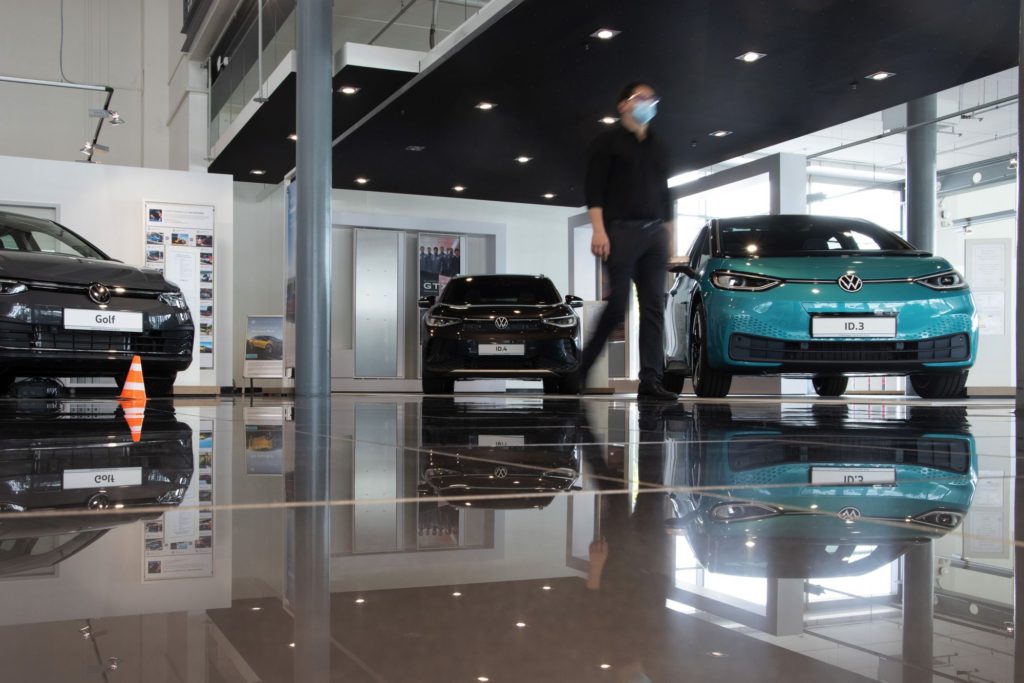(Bloomberg) — Stay on top of the electric car revolution by signing up to our Hyperdrive newsletter here.
At the beginning of each year, our analyst team at BloombergNEF pauses to reflect on what happened in our industry and gather our thoughts on what to expect in the coming 12 months. Here are some developments we’ll be watching carefully in the electric-vehicle market:
- Over 10 million plug-in vehicle sales
Everybody likes a nice, round number, and 2022 should deliver a big one. We’re expecting just over 10 million plug-in vehicle sales this year — around 14% of all global vehicle sales — up from 6.6 million in 2021 and 3.2 million in 2020. This includes plug-in hybrids, but most sales will be pure electrics.
Sales will be driven by a growing number of competitive models, tighter emissions regulations, subsidies, and fleet purchases.
China is set to dominate again this year, with almost 6 million global EV sales for 2022, according to our projections. The China market finished 2021 on a high note with over half a million EVs sold in December. China has steadily lowered purchase subsidies that are set to expire in 2023, so figures for the final quarter of this year will likely be very strong.
The U.S. lags far behind China and Europe on EV adoption, but it should get a big boost this year with new electric truck models, including the Ford F-150 Lightning, hitting the market and a refreshed federal EV tax credit.
- Tesla’s Model Y becomes one of the best-selling vehicles in the world – of any type
Tesla finished 2021 with more than 936,000 EV sales for the year, an 87% increase from 2020. With new production coming on line near Berlin and Austin, Texas, and expanded capacity in both Fremont, California, and Shanghai, Tesla will break records again. We expect the Model Y to be the world’s best-selling EV this year at almost 800,000 units sold. If Tesla can achieve this, it would be a watershed moment for the global auto industry, with an EV cracking the top five best-selling vehicles in the world. There’s still room to run at the very top, though — the trusty Toyota Corolla regularly punches in well above 1 million units a year.
- Even-faster growth in the commercial EV segment
It’s not all about passenger cars. Sales of commercial EVs will accelerate in 2022, rising about 75%. We expect 260,000 all-electric vans will be sold, up from an estimated 154,000 in 2021, with large fleet orders underpinning most of these sales. A broad base of light-duty commercial vehicle models is now available from the most of the leading car makers, including Daimler, General Motors’s BrightDrop, Ford, Renault and Stellantis, as well as from several startups. Europe and China are likely to dominate commercial sales again this year. In the U.S., sales have been minimal so far, but there’s no shortage of corporate orders, and deliveries should pick up soon. Deliveries of larger commercial EVs are still small but also are rising quickly.
Bumps in the road
With EV sales booming, attention is shifting to the remaining areas that could still slow down adoption: charging infrastructure and battery materials. One picture is rosy, the other less so.
- Chargers: More charging points are sprouting up around the world. By the end of 2022, we expect the total number of public points globally to reach 2.7 million, up from 1.8 million in 2021. A spate of company announcements will start to come to fruition this year, and those who were holding back installations while they waited for expected government funds will be actively working to take advantage of these new pots of money. The number of installs in China will continue to outpace the rest of the global market as they lay a strong foundation ahead of demand to incentivize even higher levels of EV adoption. The number of posts in the ground isn’t everything, though. Companies are also working on improved consumer interface, payment options and reliability from the chargers that have been installed.
- Batteries: The outlook for batteries and raw-material supplies is less positive. While there is enough battery-manufacturing capacity to meet BNEF’s sales forecast for the year, supply of raw materials — lithium and nickel, in particular — continues to look very tight. The EV industry has grown accustomed to steady annual declines in the costs of battery packs. However, this decades-long trend could come to a halt in 2022 as the effect of rapidly rising raw material and component prices hit the auto sector. We anticipate that the volume-weighted average battery-pack price will increase by $3/kWh in nominal terms to $135/kWh in 2022. The higher prices we expect to see in the battery industry in 2022 and 2023 could delay the point at which EVs start to reach price parity with traditional vehicles (starting around $100/kWh) by two years, from 2024 to 2026. Even so, this is unlikely to reverse the rising tide of EV adoption.
More stories like this are available on bloomberg.com
©2022 Bloomberg L.P.











